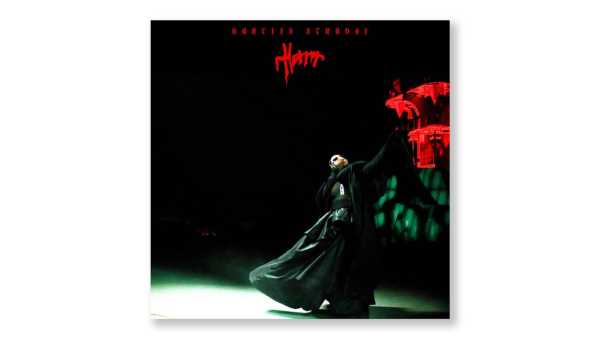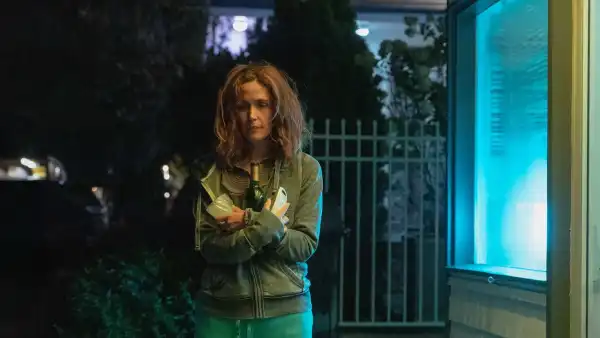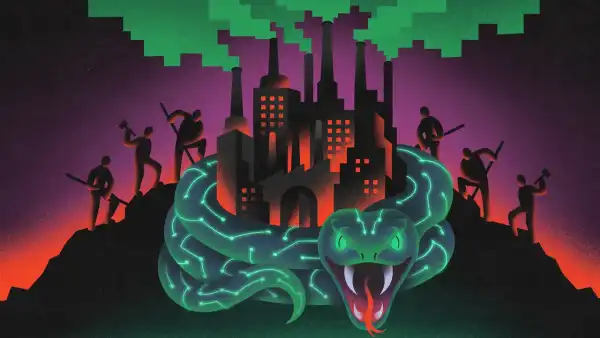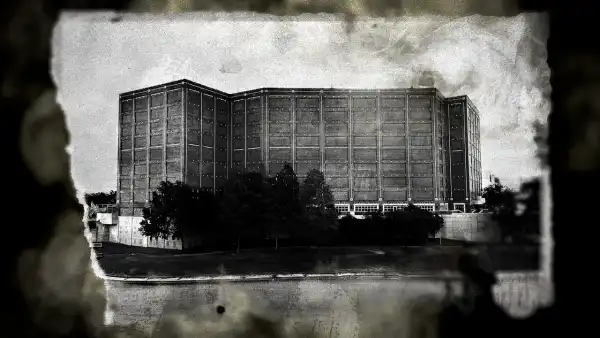
Save this storySave this storySave this storySave this story
I consumed the nineties Black horror films of my youth largely through my fingers, spreading them just wide enough, occasionally, to put a visual to some discomforting sound. The films—“Def by Temptation” (1990), “Candyman” (1992), “Tales from the Hood” (1995)—were not all that different in approach from a contemporary Black horror film like “Get Out,” in that all of them used the genre as a vessel to explore some plight impacting Black folks. They pulled from the oral tradition of Black folklore, wherein, by the end of a journey that involves witnessing some evildoing, you exit with a lesson, a moral to the story. In “Def by Temptation,” for example, a succubus played by Cynthia Bond preys on womanizing Black men. “Tales from the Hood” was sectioned into four stories, each told by a funeral-home director who’s prolonging a drug sale, and each offering some takeaway about police violence, domestic abuse, gangs, racism. These films weren’t entirely reliant on the cyclical suspense-and-violence formula used in the more prominent slasher films of the era. There were, of course, moments that ignited real fear, particularly if you were a child who often felt afraid of the world, as I did. But the danger was presented with a demand—a hope that the fear the film instilled in you could, potentially, help you survive. In “Tales,” the lurking monster wasn’t a masked machete-wielding villain; it was a cop, or some guy on your block. You could walk away from a movie like that holding fear in a different way, until you learned to make yourself frightening enough, or impenetrable enough, to ward off earthly evils.
In the press materials for “Horror,” the third studio album by Bartees Strange, the musician recounts how he would watch scary movies as a child to make himself strong, to emotionally prepare himself for the outside, as a kind of immersion therapy into the sharp and unpredictable collection of brutalities that together make up the world. Sonically, Strange’s music has always been stitched from a patchwork of colors that seem like they should clash but somehow cohere seamlessly—each element its own universe but also entirely reliant on its neighbors. Prior to his acclaimed 2020 début, “Live Forever,” a mix of indie rock, pop-punk, and hip-hop, Strange was in the Brooklyn-based post-hardcore band Stay Inside. He has a voice that can oscillate between tender intimacy and a pained howl, and he writes choruses that are often large in the way that mid-two-thousands emo choruses were large—all-consuming sonic events. His lyrics communicate interior hauntings—and pleasures—matter-of-factly, as in his 2017 song “Going Going,” which contains the line “The women who loved me / whipped me with switches.” It’s a compact lyric with a world inside of it, and it hasn’t left my mind since I first heard it years ago.
Strange’s ability to quickly cut to the visceral makes “Horror” a tantalizing project. The album’s black-and-red visual motif is borrowed from a kind of two-thousands-horror-film-poster approach (I mean that as a compliment), but the songs themselves are a series of meditations on complex, consuming anxieties. Strange is a Black, queer man who spent his formative years as an Army brat in rural America, which embeds its own set of worries into a person. “Horror” deconstructs that top-level fear and unearths a series of more private preoccupations—fear of loneliness, fear of isolation, fear of not being a good friend, fear of not being loved or understood.
Jack Antonoff helped produce the album, which was recorded largely in Strange’s home studio. Strange’s musical influences include seventies pop and soul, nineties and two-thousands sounds, and various eras of hip-hop; on “Horror” he mixes and melds those genres into unique forms. The opening song, “Too Much,” features soulful croons accompanied by bending guitar notes that would sound equally at home on a nineties R. & B. record and on a rock album from the twenty-tens; then, halfway through the song, the big sounds drop out, and over sparse drums Strange spins directly into a rap verse that explodes into a brief guitar solo. This wonderfully hectic collision sets the tone for the rest of the album.
I once had a mentor who insisted that there are two types of poets: those who prioritized beauty over truth, and those who sought truth and believed that, in the process of seeking, some beauty might emerge. If I had to use that flawed binary to analyze Strange, at least on “Horror,” I’d say that he falls into the latter category. “Baltimore,” a sparse acoustic ode, is a patient exploration of belonging, or lack thereof, starting from the opening line: “When I think about places I could live / I wonder if one’s good enough to raise a few Black kids.” “Doomsday Buttercup”—a song driven by a light combination of percussion and acoustic guitar that sounds joyfully reminiscent of late-nineties neo-soul—is rich in longing and desire, with Strange lamenting, “It’s really hard to be alone”; the song ends with him singing in an intermittent near-falsetto, on repeat, “Butter me up.” As lovely as the song is, it left me teeming with the kind of anxiety that comes from watching someone reaching and reaching and reaching for another who may or may not reach back. It is another reminder, on an album filled with them, that fear itself is transferrable.
What delights me about “Horror” is that it presents a museum of discomforts and anguish without presenting solutions or resolutions. The fear that hovers over all others is the reality that some things might change, others might not, and that you will be left without control, without knowing. Beauty and vulnerability are not mutually exclusive, but the two collide often on “Horror.” In “Sober,” for example, Strange sings of being trapped in the sometimes unpleasant chaos of one’s own mind, overrun with insecurities: “I’m just trying to show love / scared of being cliché.” The song ends with a repetition of the chorus line—“That’s why it’s hard to be sober”—and that’s it. But “Horror” isn’t all delectable heartache and fear; it’s also, at points, a good-ass time. Strange sounds confident and boastful on songs like the upbeat “Norf Gun,” a breathless romp in which he spills out lyrics that feel like a single run-on sentence (“Ask myself biggie biggie bruh what we finna do today / That’s my time gotta slide time to get my ass back to L.A.”). “Lovers,” a pulsating dance track that distorts Strange’s voice, might seduce a listener into caring less about the lyrics than about satisfying an immediate desire for movement.
Musically, “Horror” ranges widely, but thematically Strange keeps finding new ways to say that he’s survived what once scared him, and has emerged indestructible, while simultaneously admitting that there are new things he must find a way to survive. Those aren’t separate tracks of thought. When I look now at the films I used to watch through my fingers as a child, they no longer frighten me; they even seem comical. It isn’t so much that what used to scare you has no impact anymore; it’s that you, perhaps, have moved on to a different set of fears. Someone leaves you before you are ready for them to, and they don’t come back. A city tears down your childhood home. You lose a job and the rent is still due. You are at the intersection of multiple identities and they are all at the margins, and life on the margins is growing increasingly hostile. You can fear the once dead, rising from the grave, or you can become him. ♦
Sourse: newyorker.com







